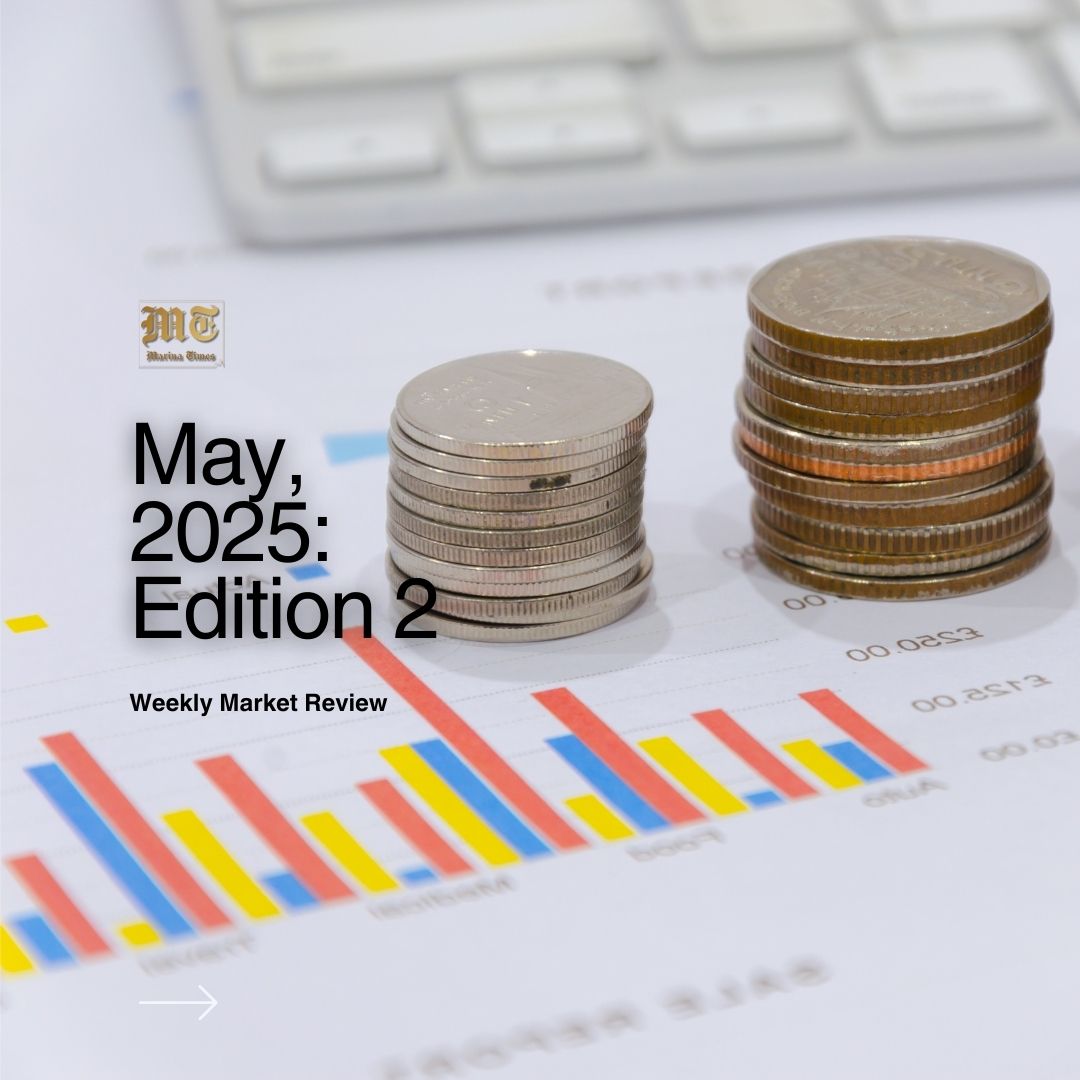

As the National Bureau of Statistics (NBS) prepares to release April 2025 inflation data on the 15th of May, ceteris paribus, all eyes are on the trajectory of prices in the supposedly Africa’s largest economy. With inflation still very much the elephant in the room, the question dominating the minds of analysts, traders, and consumers alike is whether Nigeria is finally nearing a turning point or simply pausing before the next surge.
Preliminary inflation forecasts from market analysts and independent research firms suggest inflation for April is likely to fall between 24.50% and 24.75% year-on-year. If this projection holds, it would represent a modest uptick from the 24.23% recorded in March, albeit driven by different underlying forces.
In the week under review, system liquidity improved, and the money market opened with a liquidity surplus of over ₦684.79 billion on Friday. Consequently, short-term borrowing rates saw a slight increase, with the O/N rate rising to 26.95% from the previous week’s 26.83%, while the OPR was maintained at 26.50%. The Naira fluctuated between a high of $/₦1,615.00 on Wednesday and a low of $/₦1,601.98 on Monday, closing at $/₦1,607.00 on Friday.
The Nigerian Treasury Bill (NTB) auction held on the 7th of May, 2025 drew significant attention. The Debt Management Office (DMO) offered a total of ₦550 billion across the three standard tenors, an increase from the ₦400 billion offered at the previous auction in April. The auction recorded a notable subscription of a little over ₦1 trillion, representing about ₦420 billion decline compared to the ₦1.5 trillion bid at the preceding auction.
The results breakdown:
Given the outcome of this auction, the implications for the secondary market are significant. Stop rates are poised to exert upward pressure on yields in the secondary market going forward.
AUCTION DATE | 07-05-2025 | 07-05-2025 | 07-05-2025 |
ALLOTMENT DATE | 08-05-2025 | 08-05-2025 | 08-05-2025 |
MATURITY DATE | 07-08-2025 | 06-11-2025 | 07-08-2026 |
TENOR | 91-DAY | 182-DAY | 364-DAY |
OFFER (₦) | 50,000,000,000 | 100,000,000,000 | 400,000,000,000 |
SUBSCRIPTION (₦) | 82,166,100,000 | 48,435,995,000 | 956,881,517,000 |
ALLOTMENT (₦) | 77,215,998,000 | 38,494,994,000 | 482,619,007,000 |
STOP RATES (%) | 18.0000 | 18.5000 | 19.6300 |
PREVIOUS STOP RATES (%) | 18.0000 | 18.5000 | 19.6000 |
Ahead of the Nigerian Treasury Bills (NTB) auction, the Central Bank of Nigeria (CBN) conducted an Open Market Operations (OMO) auction on the 6th of May, 2025. Despite setting a total offer of ₦500 billion, the CBN successfully raised ₦756.74 billion, slightly below the ₦804.85 billion mopped up at the previous auction.
A particularly noteworthy detail was the 329-day tenor, which saw total bids of ₦716.39 billion, precisely matching the amount allotted. This probably suggests the CBN’s strategic intent to match investor appetite with surgical precision. In contrast, the 315-day tenor attracted bids worth ₦57.35 billion, of which only ₦40.35 billion was allotted, reflecting a bid-to-cover adjustment of ₦17 billion and a more selective allotment approach.
Despite elevated inflationary pressures, investor demand for OMO instruments remains strong. The auction closed with an overall oversubscription of ₦256.74 billion, though this marked a modest decline compared to the near-₦900 billion raised in the previous round. The marginal reduction suggests that while liquidity remains ample, market participants are beginning to weigh allocation strategy more critically.
In terms of pricing, the 315-day stop rate rose by 28 basis points, increasing from 22.37% to 22.65%, indicating growing investor insistence on higher compensation. Conversely, the 329-day tenor was allotted at a stop rate of 22.72%, marginally lower by 1 basis point from the previous auction, perhaps reflecting a market consensus that rates may be nearing their peak.
It is most likely safe to say that the strong demand for long-dated OMO bills continues to demonstrate investor confidence in Nigeria’s sovereign instruments, even against a backdrop of macroeconomic volatility. This active positioning for both yield and duration, particularly among pension funds, institutional investors, asset managers, and some offshore participants, suggests that current rate levels may present an opportunity to lock in attractive returns before any potential future policy easing. Are we anticipating rate cuts? MPR is at 27.50%, current inflation at 24.23% with a possible expectation of an increase at the next reading.
TENOR | AUCTION DATE | OFFER (₦’ B) | BIDS (₦’ B) | RANGE OF BIDS (%) | STOP RATES (%) | PREVIOUS STOP RATES (%) | TOTAL SALE (₦’ B) |
315-DAY | 06-05-2025 | 250.00 | 57.35 | 22.4900-23.0900 | 22.6500 | 22.3700 | 40.25 |
329-DAY | 06-05-2025 | 250.00 | 716.39 | 22.5900-22.7200 | 22.7200 | 22.7300 | 716.39 |
April inflation is expected to reflect persistent pressure from food prices, exchange rate instability, and the second-round effects of higher energy and transport costs.
The Naira’s exchange rate against the US Dollar has continued its erratic movements despite the Central Bank of Nigeria’s (CBN) renewed interventions. Imported inflation continues to filter through, especially on items like pharmaceuticals, processed foods, and household goods.
The Central Bank of Nigeria, under the leadership of Governor Olayemi Cardoso, has maintained a more balanced monetary stance. At the last Monetary Policy Committee (MPC) meeting in February, the benchmark interest rate was maintained at 27.50%. The rationale? A move to most likely observe the previous hawkish stance ahead of the next MPC meeting and restore investor confidence in the Naira.
Rising global interest rates and persistent geopolitical tensions in the Middle East and Eastern Europe have kept imported inflation high. Global food prices remained volatile, posing a risk for Nigeria’s already fragile import-dependent food system.
April’s inflation data may not offer much comfort, but it will be a critical signpost. If inflation begins to stabilise within the 25% range, policymakers may interpret it as an early signal that the worst could be over, especially if currency markets continue to show signs of recovery. If the numbers come in higher, however, expect more pressure on the CBN to intervene more aggressively.
In the course of last week, the U.S. Federal Reserve maintained its benchmark interest rate at 4.25% to 4.50% in May 2025. This decision, amid trade tensions and economic uncertainties, is unlikely to directly influence the Central Bank of Nigeria’s (CBN) Monetary Policy Committee (MPC) decision in its upcoming meeting. Nigeria’s economic landscape presents unique challenges that necessitate independent monetary policy considerations.
While global monetary policy trends, such as the U.S. Fed’s rate decisions, provide context, Nigeria’s MPC primarily focuses on domestic economic conditions. With inflation rates significantly higher than global averages, the MPC’s priority remains price stability. Stabilising the Naira is crucial to controlling imported inflation and maintaining investor confidence. Analysts suggest that while the CBN may consider easing monetary policy later in the year, any decisions will be contingent upon clear signs of inflation moderation and economic stabilisation.
Nigeria’s recent removal from the International Monetary Fund (IMF) list of debtor countries, following the full repayment of its $3.4 billion COVID-19 emergency loan, marks a substantial milestone in the nation’s economic trajectory. This development carries significant implications for both the broader economy and the fixed income markets.
The complete settlement of the IMF loan enhances Nigeria’s sovereign creditworthiness, potentially leading to more favourable credit ratings, lower external borrowing costs, and increased investor confidence.
With the IMF loan repaid, Nigeria can reallocate resources previously earmarked for debt servicing towards critical sectors such as infrastructure, healthcare, and education. This reallocation could stimulate economic growth and development, may attract foreign direct investment and boost economic partnerships.
In the fixed income market, improved sovereign risk perception may lead to a decline in yields on government securities, as investors demand lower risk premiums. This yield compression could result in capital gains for existing bondholders.
Additionally, reduced external debt obligations may give the Central Bank of Nigeria greater flexibility in implementing monetary policies aimed at controlling inflation and stabilising the currency, which could positively influence bond market dynamics.
Nigeria’s exit from the IMF debtor list is a positive development, signalling improved fiscal management and economic resilience. While challenges remain, this achievement lays groundwork for enhanced investor confidence and potential growth in the fixed income markets.
In the coming weeks, market sentiment is expected to pivot around two key events: the release of inflation data and the Monetary Policy Committee (MPC) meeting—particularly any developments concerning the Monetary Policy Rate (MPR), which was held steady at the last sitting. Investors will be watching closely for any policy shifts that might alter the current trajectory.
The offer by the DMO to issue ₦300 billion in a Sovereign Sukuk could also dictate the pace, albeit in the near term. There are indications that the 7-year Sukuk is likely to be priced at 19.75%. We foresee a potential distortion in secondary market dynamics ahead of the bond auction as a consequence of Sukuk issuance. The switch in tenors on offer going into June implies that the 2033s (which have the second highest coupon on an FGN bond at the moment) will not be offered going forward.
On the digital front, Bitcoin has made headlines yet again, soaring past the $100,000 mark following a surprise announcement by US President Donald Trump and UK Prime Minister Keir Starmer. The duo revealed a new bilateral trade agreement—the first since the US imposed sweeping tariffs on the 2nd of April. The unexpected breakthrough has triggered a cascade of liquidations among bearish short sellers, many of whom had been betting on further price declines.
Oil prices also continued their upward climb, crossing $62 and 65$ for WTI and Brent respectively as the US and China seem to be in agreement on tariffs.